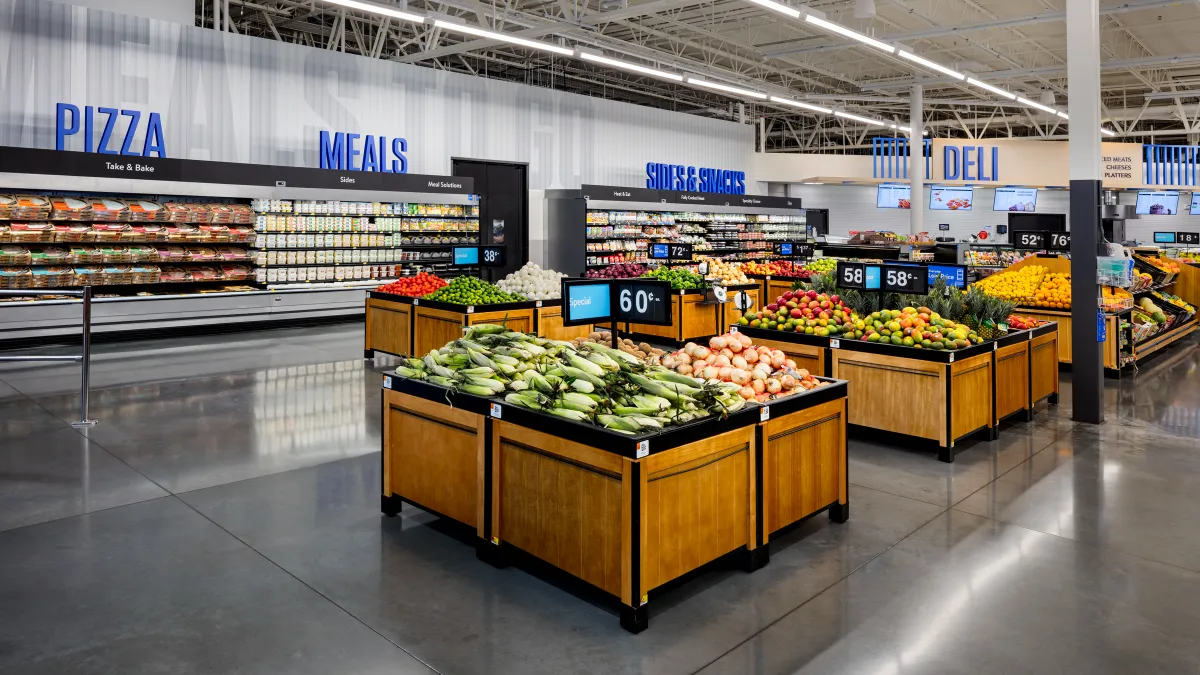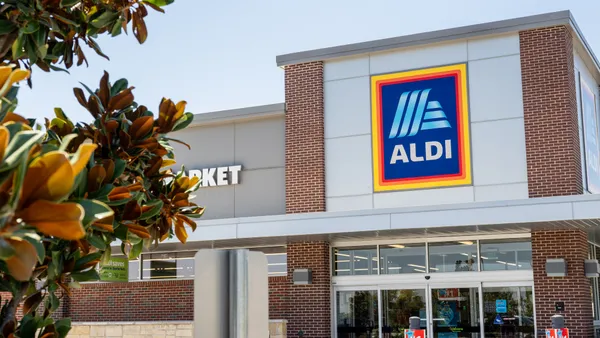Dive Brief:
- Consumer satisfaction with grocery stores has taken a hit during the pandemic, according to the latest results from the American Consumer Satisfaction Index (ACSI), which factors in surveys from more than 500,000 consumers collected between April and September. No grocers improved their score from last year, and the industry overall saw its satisfaction score dip 3.8%.
- Trader Joe’s and Wegmans led the way with satisfaction scores of 84, followed by Costco and Publix at 83. All four grocers posted the same score last year. H-E-B, which tied for first place in 2019, saw its satisfaction score fall 2% while Albertsons recorded the largest drop, down 8% to a score of 69.
- Although grocers have reaped an economic windfall during the pandemic, the ACSI results underscore the challenges they’ve faced, indicating they have work ahead of them to build consumer loyalty.
Dive Insight:
It’s been far from business as usual for grocers and consumers this year, and the dip in ACSI scores reflect the significant business disruptions that have occurred.
Consumers were particularly dissatisfied with inventory levels, as well as the number of sales and promotions, the organization noted, reflecting the stock-up buying that was especially pronounced in the spring and that led retailers to pull back on product offers.
ACSI scores also reflect consumer sentiment across categories like website satisfaction, store locations and checkout speed. The organization didn’t provide scores for each category, but did note that checkout speed satisfaction remained level with last year’s score, 76, while satisfaction with the quality and reliability of grocers’ mobile apps dropped 2% and 4%, respectively.
ACSI scores for customer satisfaction with retailers also fell last year and in 2018, indicating that growing demands for a better shopping experience aren't unique to pandemic times.
Satisfaction tumbled across other retail sectors the ACSI measured this year, as well, reflecting widespread inventory struggles along with closures and safety measures that have impacted the store experience. Satisfaction with internet retailers dropped 4.9% overall, with Amazon’s score falling 7%. Department stores saw their average satisfaction score fall 1.3% while specialty retailers’ had their score drop 2.6%. Health and personal care retailers’ satisfaction score remained unchanged compared to last year.
Costco, which was rated under the internet retailer, department store and grocery categories, mostly maintained its satisfaction score compared to last year. Curiously, the e-commerce-averse company saw its score as an internet retailer fall just 1% while its score in the department store category fell 2%, reflecting dissatisfaction with inventory levels.
Walmart was also scored across multiple retail categories, losing one percentage point in internet retailer, gaining one percentage point in personal care and keeping the same score in the department store category. In grocery, its satisfaction score fell 3% to 71. Kroger and Albertsons were also scored for their health and pharmacy services, with the former losing one percentage point compared to last year, while Albertsons dropped 4%.
From panic buying to shuttered salad bars, grocery shopping has changed dramatically this year, and it’s not surprising that customer satisfaction has slipped as a result. But there are elements of the store experience, like the quality of fresh products and the reliability of mobile apps, that are firmly in their control.
The next several months promise to be crucial. Now that they’ve mostly recovered from panic buying, grocers have shifted into innovation mode as they hone their apps, build new e-commerce services and reanimate parts of the store like hot bars and restaurants.
Consumer reception to these updates will be key to retailers securing long-term loyalty. At the same time, companies are facing the prospect of a second wave of panic buying that could throttle them back into survival mode.










